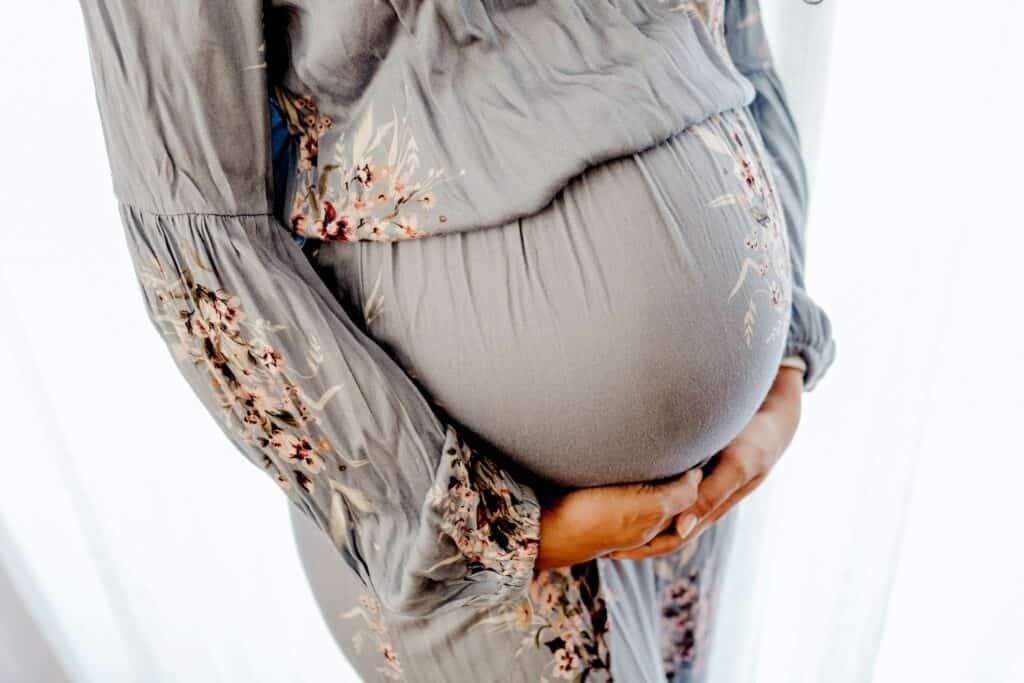Approaching labor can be an exciting yet nerve-wracking time for expectant mothers. Knowing the signs labor is 24-48 hours away can help ease some of the anxiety and prepare for the arrival of the new bundle of joy. While every woman’s experience is unique, there are some physical and emotional changes that can signal the onset of labor.
Understanding labor and its stages is crucial to recognizing the signs of approaching labor. The first stage of labor is characterized by contractions that help the cervix to dilate and efface. The second stage is when the baby is born, and the third stage is when the placenta is delivered. The signs of approaching labor can vary depending on the stage of labor, but there are some common physical and emotional changes that women may experience.
Key Takeaways
- Knowing the signs that labor is 24-48 hours away can help ease anxiety and prepare for the arrival of the baby.
- The physical signs of approaching labor include contractions, back pain, and changes in vaginal discharge.
- The emotional signs of approaching labor include nesting instincts, mood swings, and a sense of calmness.
Understanding Labor
Labor is the process by which a woman’s body prepares for childbirth. It is a natural and normal process that can be divided into three stages: early labor, active labor, and transition. Each stage is characterized by different symptoms and behaviors.
Early Labor
Early labor is the first stage of labor and can last for several hours or even days. During this stage, the cervix begins to dilate and efface, and the woman may experience mild contractions. These contractions are usually irregular and may feel like menstrual cramps. Other symptoms of early labor may include:
- Backache
- Diarrhea
- Increased vaginal discharge
- Bloody show (a small amount of blood-tinged mucus)
Active Labor
Active labor is the second stage of labor and is characterized by more frequent and intense contractions. During this stage, the cervix continues to dilate and efface, and the baby begins to move down the birth canal. The woman may also experience:
- Stronger contractions that last longer and are more regular
- Increased pressure in the pelvic area
- The urge to push
Transition
Transition is the final stage of labor and is characterized by the most intense contractions. During this stage, the cervix fully dilates, and the baby moves into the birth canal. The woman may experience:
- Strong and frequent contractions that are close together
- Intense pressure and pain in the pelvic area
- Nausea and vomiting
- Shaking and shivering
It is important to note that not all women experience the same symptoms during labor. Some women may have a silent labor, where they do not experience any symptoms until they are in active labor. Others may have a prodromal labor, where they experience contractions that do not lead to cervical dilation. It is important to discuss any concerns or questions about labor with a healthcare provider.
Physical Signs of Approaching Labor
When a pregnant woman is getting closer to labor, there are several physical signs that she may experience. These signs can vary from person to person, but some of the most common ones are:

1. Contractions
Contractions are a sign that the body is getting ready for labor. They are different from Braxton Hicks contractions, which are usually painless and irregular. True contractions are regular, and they get stronger and closer together over time. Some women may also experience lower back pain during contractions.
2. Changes in the Cervix
As labor approaches, the cervix begins to change in preparation for childbirth. The cervix may start to soften, thin out, and dilate. A healthcare provider can check the cervix to see if it is beginning to change.
3. Pelvic Pressure and Back Pain
As the baby moves down into the pelvis, a woman may feel increased pressure in the pelvic area. This can also cause lower back pain or discomfort. This pressure can be a sign that labor is approaching.
4. Baby Dropping
As the baby gets ready for birth, it may move down lower into the pelvis. This is called “dropping” or “lightening.” This can relieve some of the pressure on the diaphragm and make it easier to breathe, but it can also cause increased pressure on the bladder.
5. Water Breaking
When the amniotic sac, which is filled with fluid that surrounds the baby, breaks, it is a sign that labor is imminent. This can happen before or during contractions. If a woman’s water breaks, she should contact her healthcare provider immediately.
Overall, these physical signs can be an indication that labor is approaching. However, it is important to remember that every woman’s experience is different, and not all women will experience these signs in the same way or at the same time.
Bodily Changes Signaling Labor
Labor is a natural process that occurs when the body is ready to give birth. It can be an exciting and sometimes challenging experience for pregnant women. The following are some of the bodily changes that can signal that labor is 24-48 hours away.

1. Vaginal Discharge and Bloody Show
One of the first signs of labor is the loss of the mucus plug. The mucus plug is a thick, gelatinous substance that blocks the cervix to protect the baby from infection. As the cervix begins to dilate and efface, the mucus plug is expelled from the vagina. This can happen all at once or gradually over several days. After the mucus plug is lost, some women may notice an increase in vaginal discharge, which can be thick and pinkish or brownish in color. This is known as the bloody show and is a sign that labor is near.
2. Loose Stools and Diarrhea
Another sign that labor is approaching is loose stools or diarrhea. As the body prepares for birth, it releases hormones that can cause the muscles in the intestines to relax. This can lead to frequent bowel movements and loose stools. While it may be uncomfortable, it is a normal part of the labor process.
3. Weight Loss and Burst of Energy
Some women may experience a burst of energy in the days leading up to labor. This is often referred to as the “nesting instinct” and can manifest as a sudden urge to clean, organize, or prepare for the baby’s arrival. Additionally, some women may experience weight loss in the days leading up to labor due to a decrease in appetite and increased metabolism.
In conclusion, there are several bodily changes that can signal that labor is 24-48 hours away, including the loss of the mucus plug, an increase in vaginal discharge, loose stools or diarrhea, a burst of energy, and weight loss. It is important to remember that every woman’s labor experience is unique, and not all women will experience these symptoms. If you have any concerns or questions about your labor, be sure to consult with your healthcare provider.
Emotional Signs of Labor
Labor is a physically and emotionally challenging experience for most women. In the days leading up to labor, many women experience a range of emotional signs that labor is approaching. Here are some of the emotional signs of labor:
Nesting Instinct
One common emotional sign of labor is the nesting instinct. This is a sudden urge to prepare the home for the baby’s arrival. Women may feel an overwhelming need to clean, organize, and decorate the home. This is a natural and normal instinct that many women experience in the days leading up to labor.
Feeling of Exhaustion
Another emotional sign of labor is a feeling of exhaustion. As labor approaches, many women feel extremely tired and fatigued. This is due to the body’s preparation for labor and the physical demands of the process. Women may feel like they need more rest than usual and may find it difficult to sleep at night.
It’s important to note that extreme fatigue and exhaustion can also be a sign of other pregnancy-related complications, such as anemia or gestational diabetes. If a woman is experiencing extreme fatigue, she should speak to her healthcare provider to rule out any potential complications.
In conclusion, the emotional signs of labor can vary from woman to woman, but the nesting instinct and feeling of exhaustion are common experiences. It’s important to listen to your body and take care of yourself in the days leading up to labor.
Monitoring Signs of Labor
There are several signs that labor is approaching, and it is important to monitor them closely as the due date approaches. Here are some things to keep in mind:

Use of Apps
There are several apps available that can help women monitor their symptoms and track their progress during pregnancy. These apps can be very helpful in keeping track of contractions, timing them, and tracking other symptoms such as back pain, cramping, and discharge. Some popular apps include Ovia Pregnancy Tracker, BabyCenter Pregnancy Tracker, and What to Expect.
Regular Doctor Check-ups
It is important to attend all scheduled doctor appointments during pregnancy. These appointments provide an opportunity for the doctor to monitor the health of both the mother and the baby, and to check for any signs that labor may be approaching. During these appointments, the doctor will check the baby’s position, monitor the mother’s blood pressure and weight, and perform other tests as needed.
In addition to these two methods, it is also important to keep a hospital bag checklist handy and be prepared for labor at any moment. By monitoring these signs and staying prepared, women can ensure a safe and healthy delivery for both themselves and their baby.
Preparing for Labor
Preparing for labor involves understanding the signs of labor and planning for delivery. This section will cover these two sub-topics in detail.

Understanding the Signs
Knowing the signs of labor is crucial in preparing for delivery. Here are some common signs that labor is 24-48 hours away:
- Increased vaginal discharge
- Lower backache or cramping
- Contractions that become more frequent, longer, and stronger
- Bloody show (mucus plug with blood)
- Diarrhea or nausea
It is important to note that not all women experience the same signs of labor. Some may have no signs at all until the actual onset of labor. However, being aware of these signs can help you prepare mentally and physically for the delivery.
Planning for Delivery
Planning for delivery involves several steps to ensure a positive birth experience. Here are some tips to consider:
- Choose a healthcare provider and hospital that aligns with your birth plan.
- Create a birth plan that outlines your preferences for pain management, delivery positions, and other important factors.
- Pack a hospital bag with essentials for you and your baby, such as comfortable clothes, toiletries, and baby clothes.
- Arrange for transportation to the hospital.
- Consider hiring a doula or birth coach for additional support during labor.
In addition to these steps, it is also important to have a support system in place. This can include your partner, family members, or friends who can provide emotional and physical support during labor.
Preparing for labor can be a daunting task, but understanding the signs and planning for delivery can help ensure a positive birth experience.
Miscellaneous Signs of Labor
Aside from the more well-known signs of labor, such as contractions and the breaking of the amniotic sac, there are a number of other signs that labor may be imminent. Some of these signs include:
- Loose Bowels: As labor approaches, the body may start to clear the bowel in preparation for delivery. This can result in loose stools or diarrhea.
- Nesting Instinct: Many women experience a sudden burst of energy and a strong urge to clean and organize their home in the days leading up to labor.
- Flu-Like Symptoms: Some women may experience flu-like symptoms, such as nausea, vomiting, and body aches, in the days leading up to labor.
- Increased Vaginal Discharge: As the body prepares for labor, the cervix may start to soften and thin out, which can result in an increase in vaginal discharge.
- Mood Swings: Hormonal changes in the body can cause mood swings and emotional upheaval in the days leading up to labor.
- Backache: As the baby moves into position for delivery, it can put pressure on the lower back, causing discomfort and pain.
- Urge to Urinate: As the baby drops lower into the pelvis, it can put pressure on the bladder, causing the need to urinate more frequently.
It is important to note that not all women will experience these signs of labor, and some may experience them without going into labor. If you are experiencing any of these symptoms and are unsure whether or not you are in labor, it is always best to contact your healthcare provider for guidance.
Related Posts:
Frequently Asked Questions
What are some signs that labor is approaching within the next 24-48 hours?
Some common signs that labor is approaching within the next 24-48 hours include regular contractions that become longer, stronger, and closer together. Women may also experience a “bloody show,” which is a discharge of mucus tinged with blood. Additionally, the amniotic sac may rupture, causing the release of the amniotic fluid.
What physical changes indicate that labor may be imminent?
Physical changes that may indicate that labor is imminent include the baby dropping lower into the pelvis, also known as “lightening,” and the cervix beginning to dilate and efface. Women may also experience increased pressure in the pelvic area and a feeling of “nesting,” or a sudden burst of energy and motivation to prepare for the baby’s arrival.
What are some common symptoms that occur in the days leading up to labor?
Common symptoms that occur in the days leading up to labor include Braxton Hicks contractions, which are irregular and usually painless contractions that help prepare the uterus for labor. Women may also experience increased vaginal discharge, back pain, and difficulty sleeping.
What are some signs that my body is preparing for labor?
Signs that the body is preparing for labor include the softening and thinning of the cervix, also known as effacement, and the dilation of the cervix. Women may also experience an increase in vaginal discharge, as well as contractions that become more regular and intense.
What are some unusual or unexpected signs that labor is approaching?
Unusual or unexpected signs that labor is approaching may include diarrhea, nausea, and vomiting. Women may also experience a sudden burst of energy, known as the “nesting instinct,” as well as a loss of appetite.
How can I tell if labor is likely to happen within the next 24-48 hours?
To determine if labor is likely to happen within the next 24-48 hours, women should monitor their contractions and note any changes in frequency, duration, and intensity. They should also pay attention to any other signs of labor, such as the release of the amniotic fluid or the appearance of the bloody show.

Iesha is a loving mother of 2 beautiful children. She’s an active parent who enjoys indoor and outdoor adventures with her family. Her mission is to share practical and realistic parenting advice to help the parenting community becoming stronger.
